
Jelenia Góra - visit and attractions

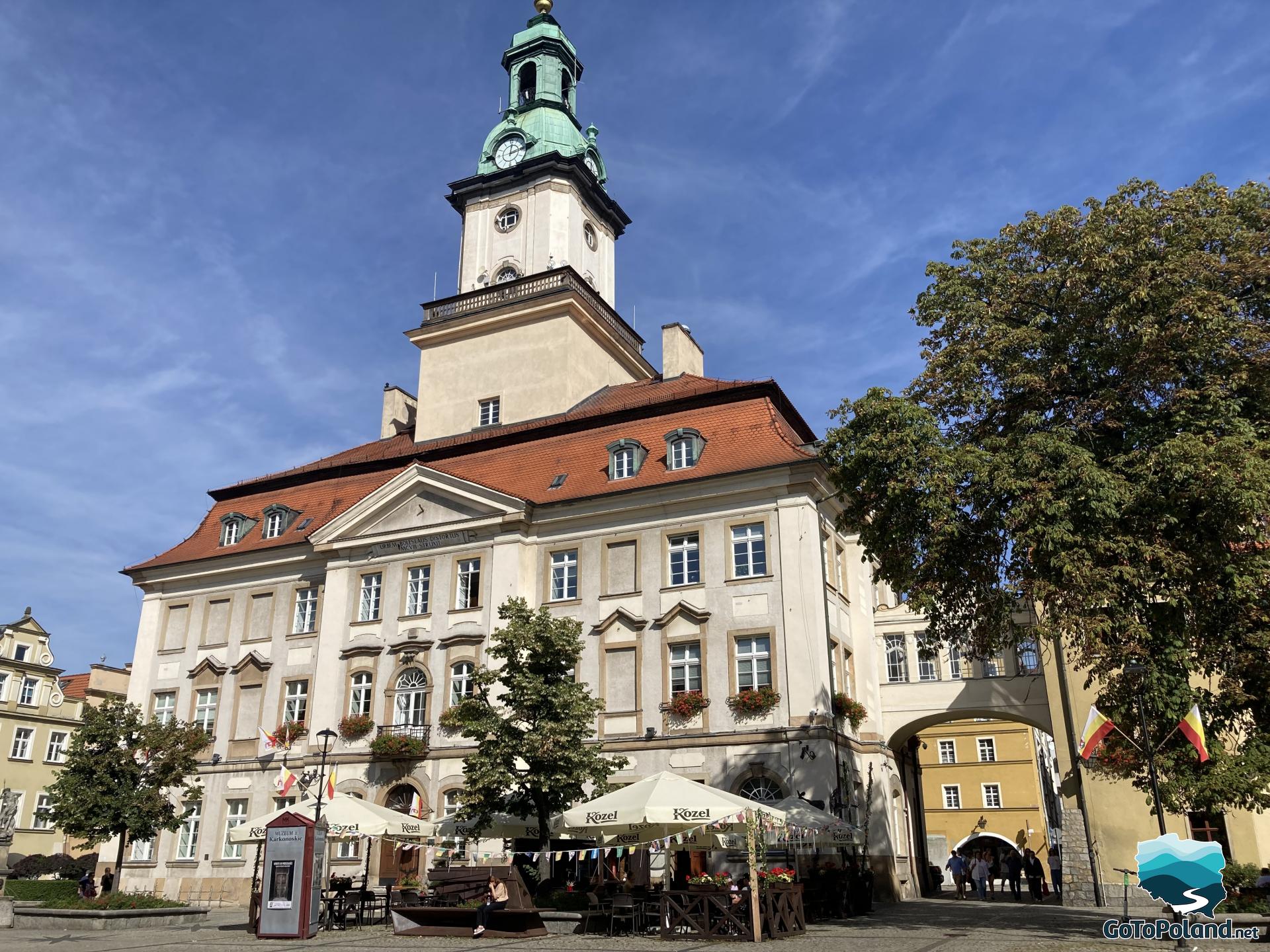
Jelenia Góra is a very nice city located in Lower Silesian province. The city is located in a valley and is surrounded by the Jizera Mountains, Kaczawa Mountains and the Karkonosze Mountains.
We passed through Jelenia Góra many times on our way to Jakuszyce, but we never stopped there. But one day my husband had a training there, so I decided to take advantage and explore the city. And as usual, I was surprised when I started visiting Jelenia Góra. It was an ordinary weekday in September, but there were a lot of people on the streets (tourists from various countries, especially the Czech Republic and Germany). During the day, people sat in cafes and restaurants, drinking, eating and having a great time (it is not a common sight, especially in smaller towns in Poland). I felt a good atmosphere there. I also learned that there is a lot to see.
How far is it from Warsaw to Jelenia Góra?
The distance from Warsaw to Jelenia Góra is 464 km.
How far is it from Wrocław to Jelenia Góra?
The distance from Wrocław to Jelenia Góra is 112 km.
What to see in Jelenia Góra?
I highly recommend visiting the Church of the Holy Cross, the Main Square, the Castle Tower, the beautiful portal of the Orthodox Church of St. Peter and Paul, as well as following the Jelonki Trail in Jelenia Góra.
More information about Jelenia Góra you can find on Wikipedia
So let's start the adventure in Jelenia Góra. Ps. In my photos you will see a lot of deer - it's nothing special.... the deer is the symbol of Jelenia Góra, why? I will explain it later in my post :)

I know from experience that most monuments and interesting places are close to the Market Square, which is why it was my starting point in Jelenia Góra. The first buildings that came into my sight were the ones whose history dates back to the Middle Ages.

The Tower and the Wojanowska Gate were a medieval defense complex. The Wojanowska Gate was protected by a moat, drawbridge, double bars and solid doorframes. The gate is decorated with Rococo cartouches with the coats of arms of Jelenia Góra, Silesia and Prussia and a commemorative inscription.
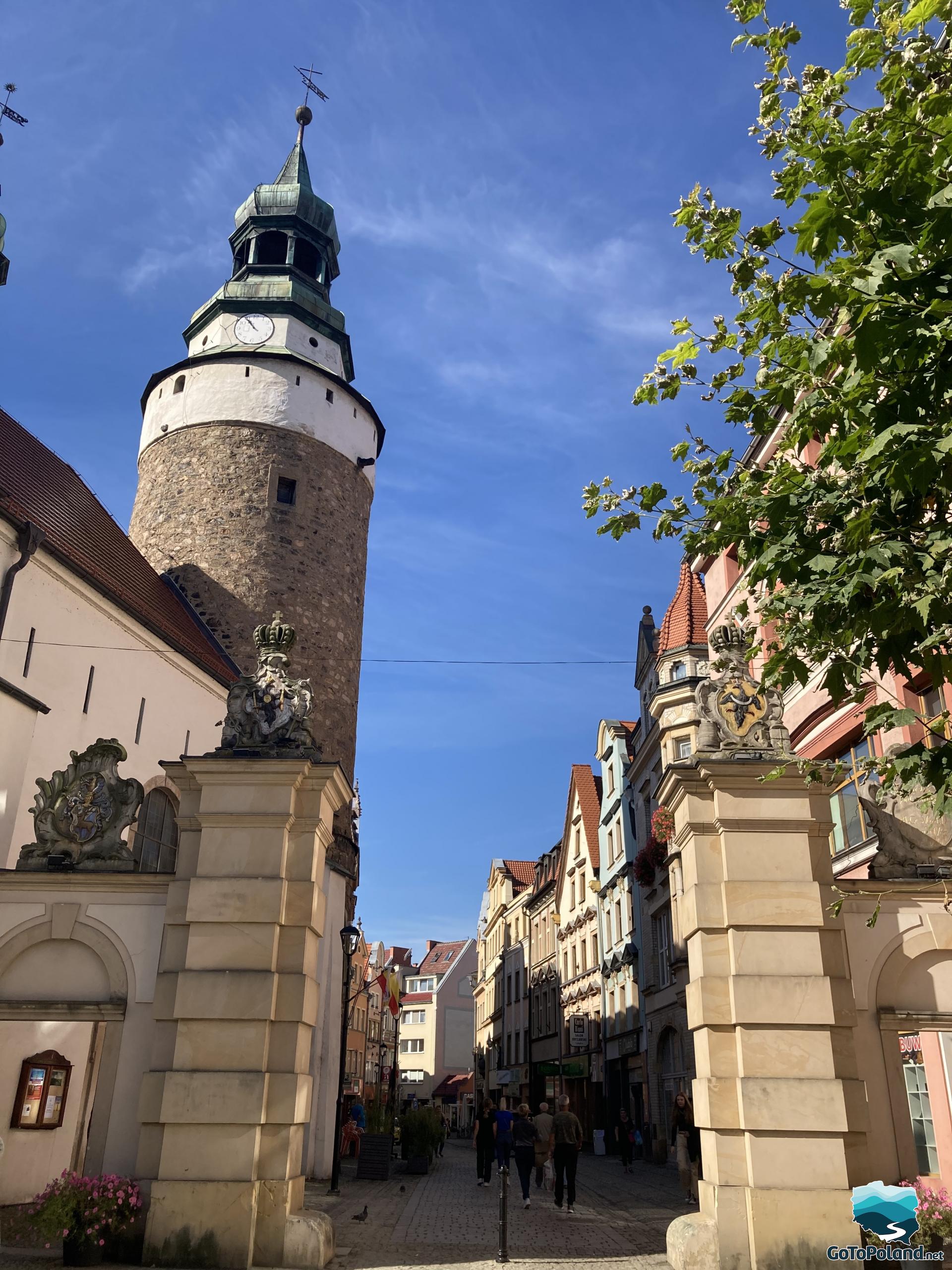
St. Anne's Chapel is located inside a medieval flanking tower, completely rebuilt in 1514. After the destruction caused by the 30-Years' War the chapel was reconstructed and furnished in Baroque style.

From the Chapel of St. Anna is very close to the Main Square, but I decided to go in the opposite direction. During my walk, I came across a unique sculpture. The "Kidnapping of Europe" sculpture by Armenian artist Vahan Bego was unveiled on May 2, 2014, the 10th anniversary of Poland's accession to the European Union.
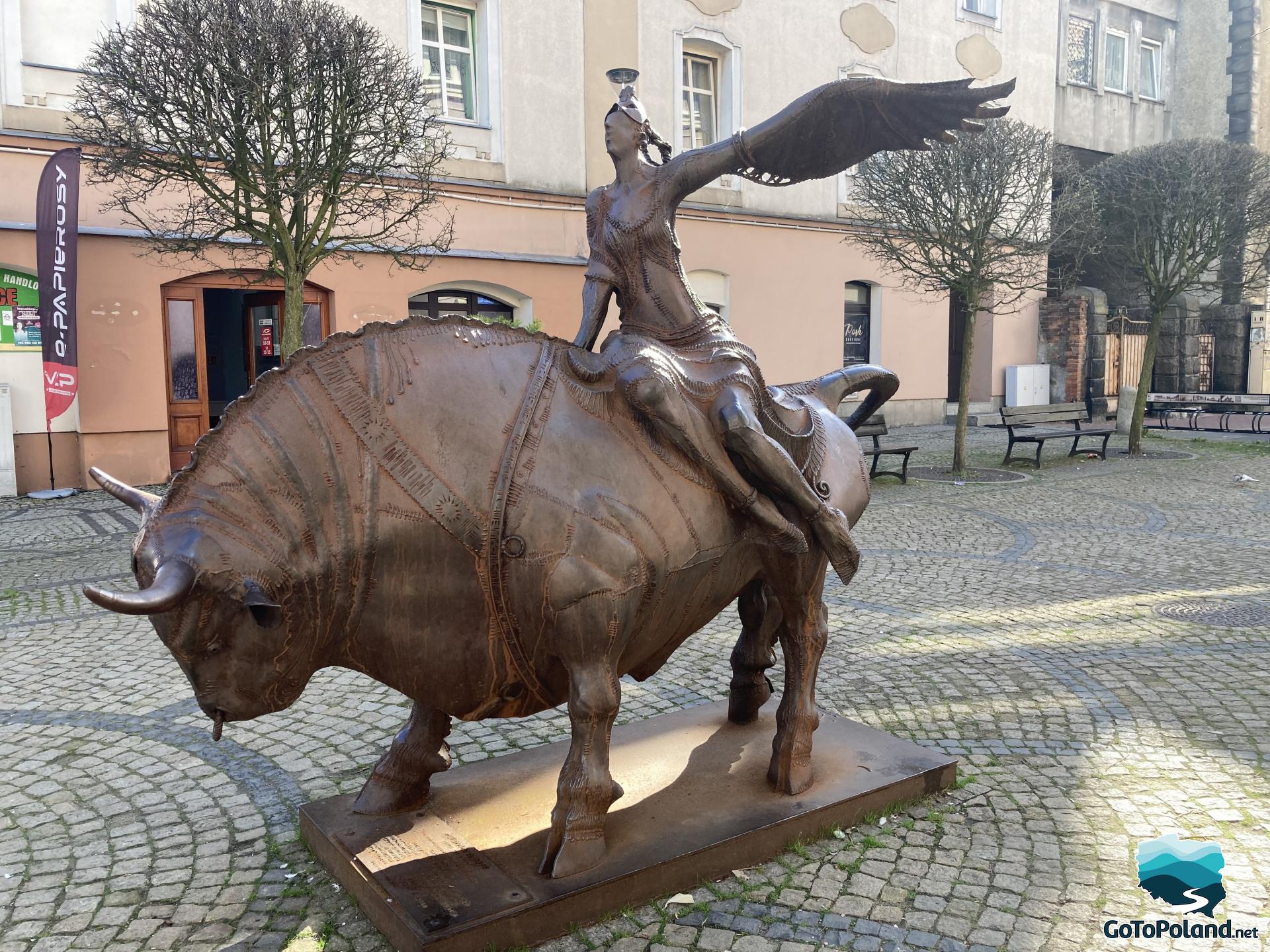
My main goal was the Church of the Holy Cross in Jelenia Góra (formerly called the Church of Grace) and the area around it. Magnificent frescoes and wall paintings decorate the interior of the church. You can see there, for example, "The Resurrection of Jesus", "Adoration of the Holy Trinity" or "Heavenly Jerusalem". The main altar of the church was built in 1733, and the organ between 1724-1727. What fascinated me most was the pulpit. It is made of sandstone and is partly gold-plated. Three angles support the octagonal base of the desktop. The pulpit and altar are magnificent. Inside, you can listen to the history of the church in Polish, Czech and, if I remember correctly, German.
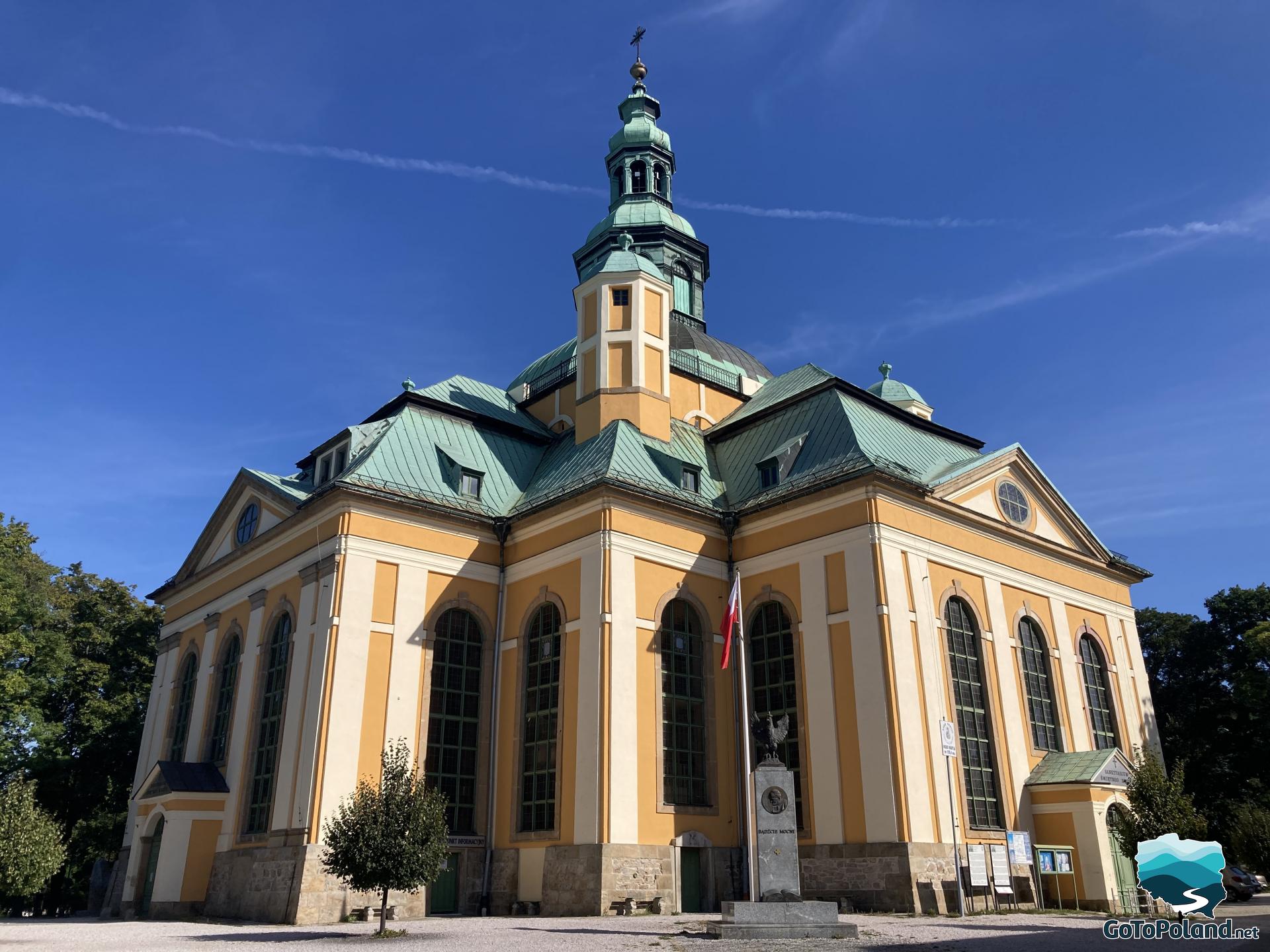
The main altar was founded in 1727 by merchant Chrystian Gotfryd Menzel. On the eastern wall in the presbytery, above the altar, there is an organ casing with figures by the sculptor J.J.Urbański, joined into one with the Main Altar. This unique prospectus contains the greatest musical treasure in Silesia, a wonderful 76-voice baroque organ with a beautiful romantic sound. The instrument was built in 1727 by the organ maker M. Röder from Berlin as a foundation of the merchant Christian Mentzel.

The pulpit was built in 1717. On the balustrade of the pulpit basket and the stairs there are bas-reliefs of Christ the Savior, the Four Evangelists, the Descent of the Holy Spirit, Moses and the Bronze Serpent, and the personification of Divine Love.

One of the interesting facts is that in 1745, lightning struck the church tower, causing the rope holding the pulpit to break. The canopy weighing many kilograms fell and killed the local pastor (Adolph Gottlob) who was preaching at the time.
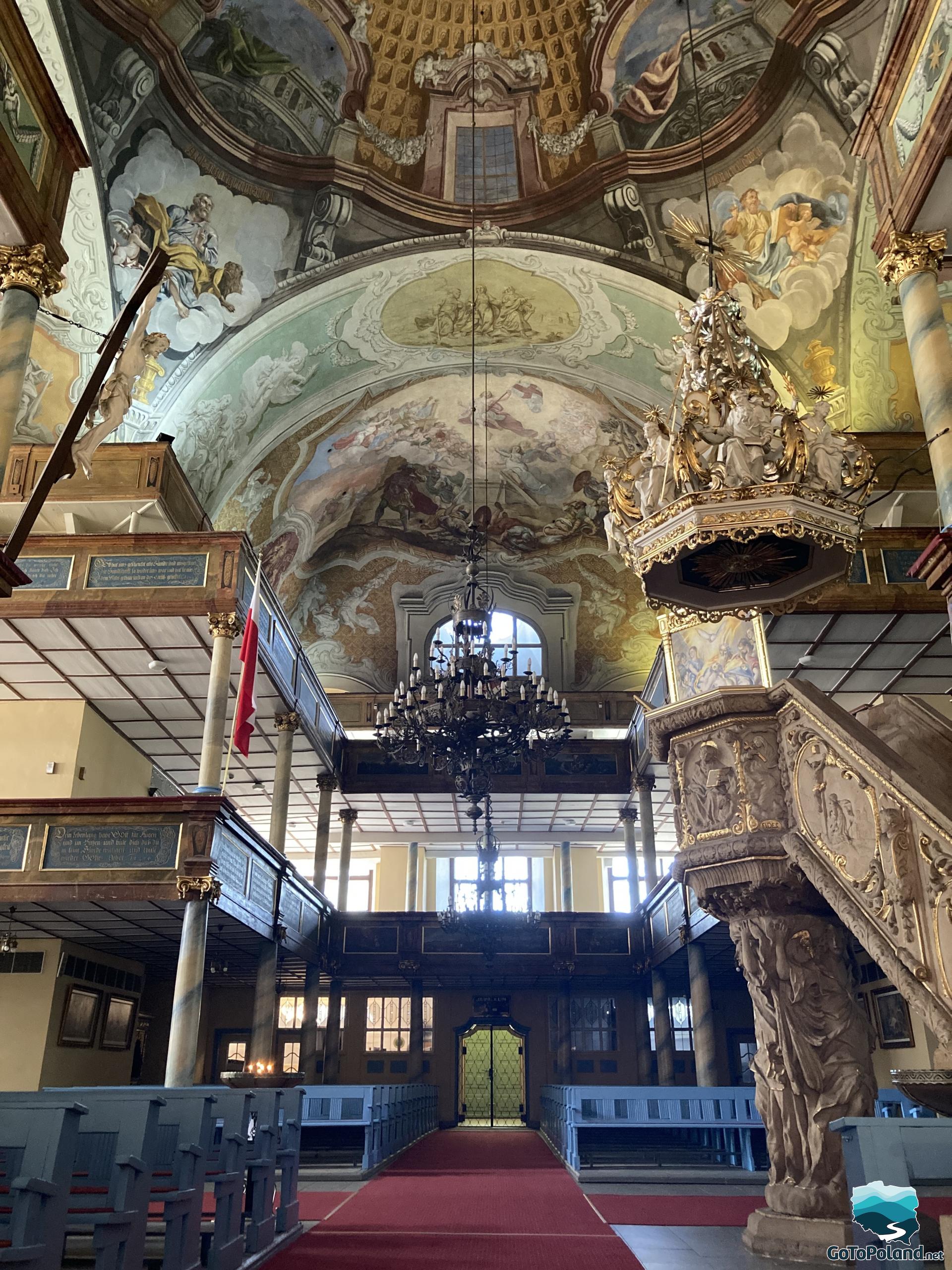
There are numerous family chapels and monuments around the church. There are 19 grave chapels, and the first one was built in 1716.
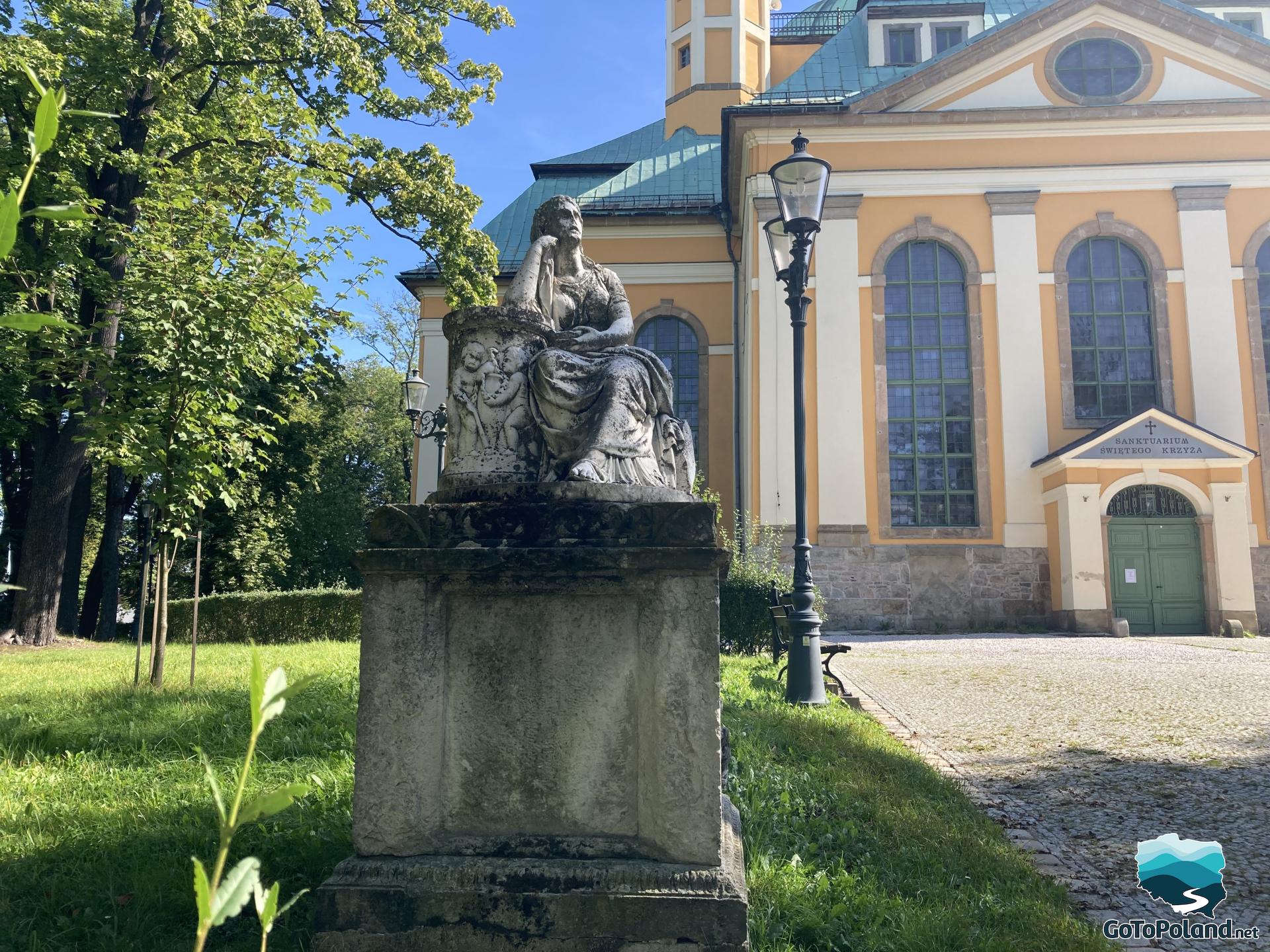
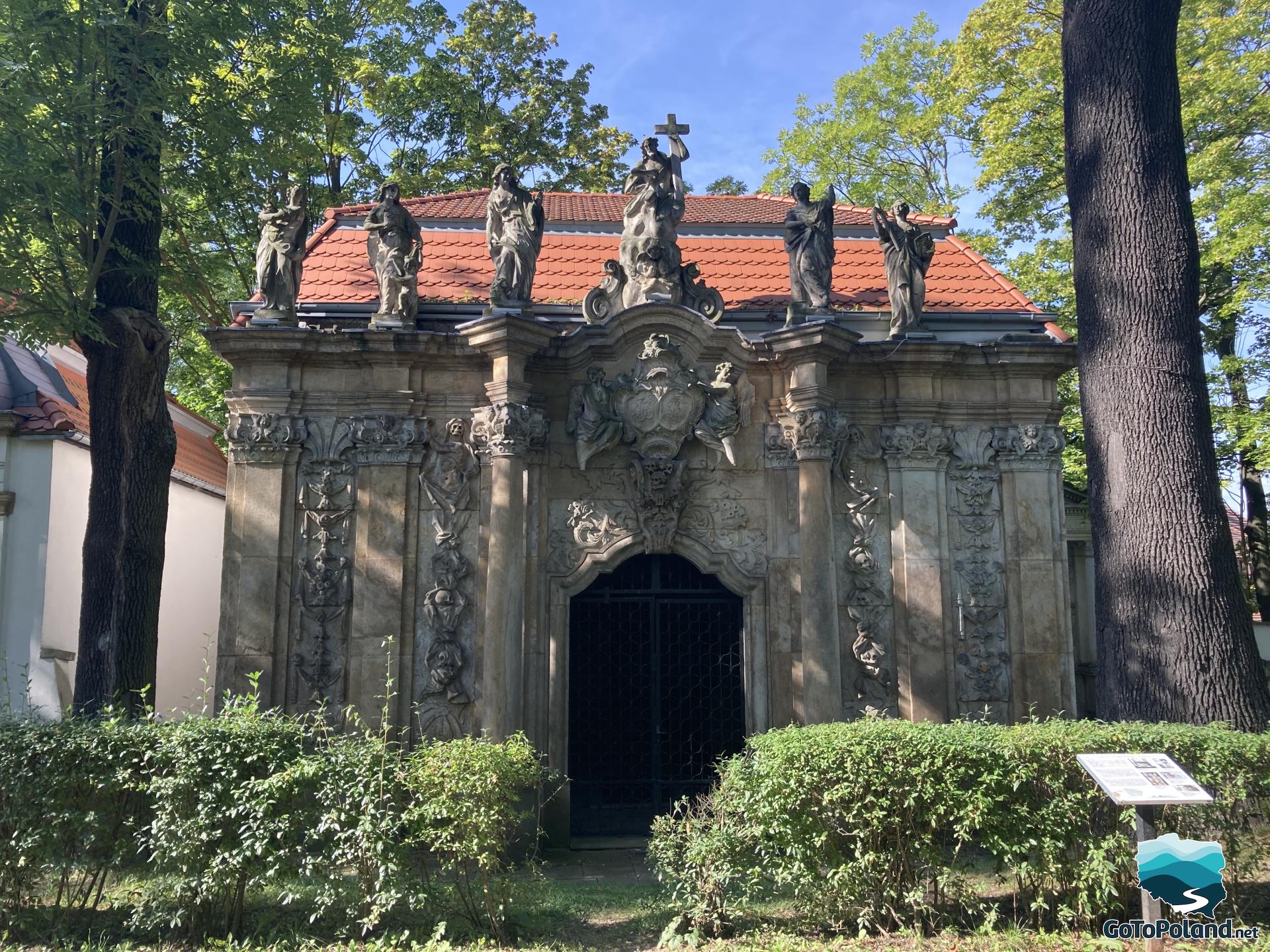
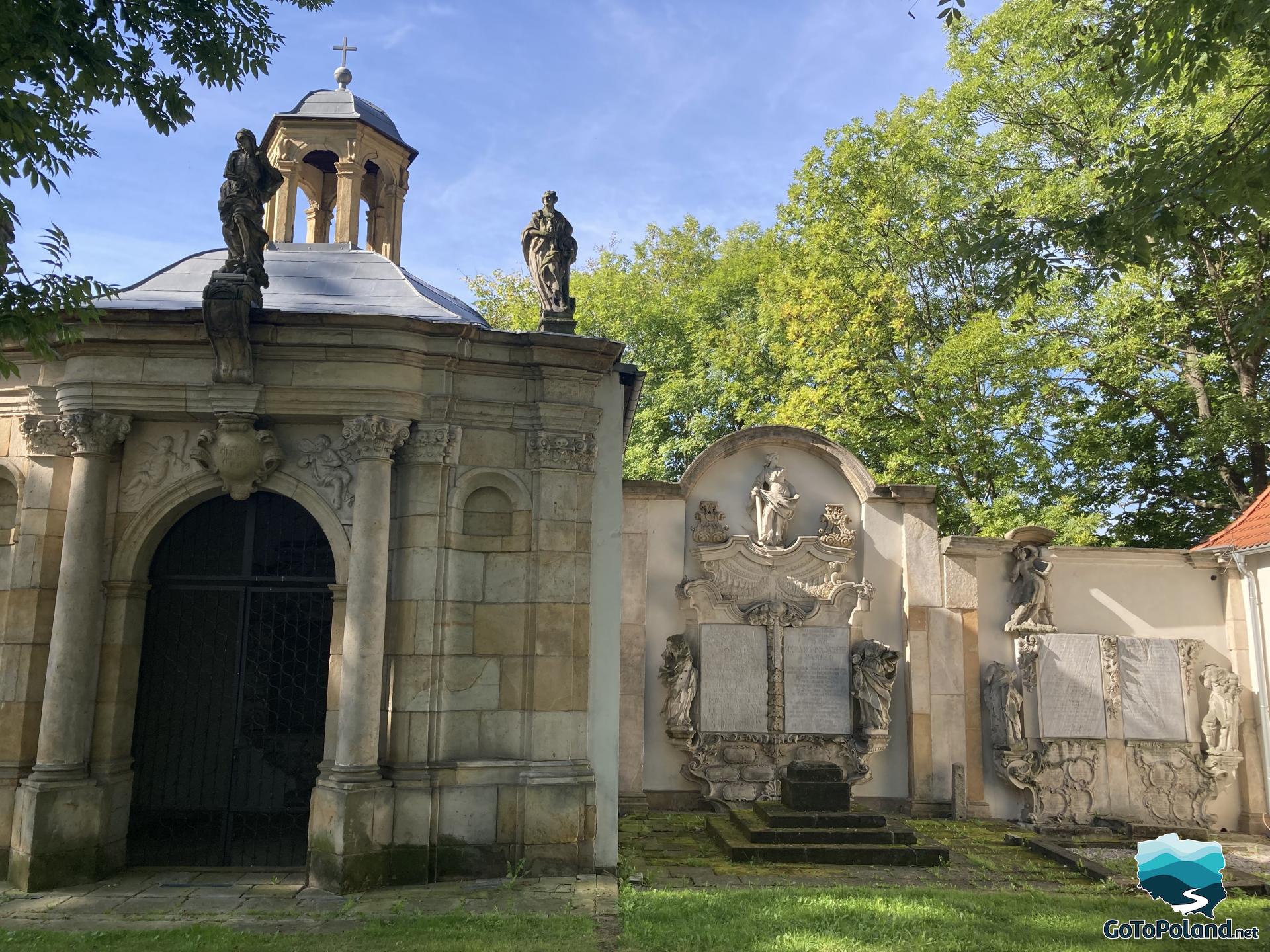
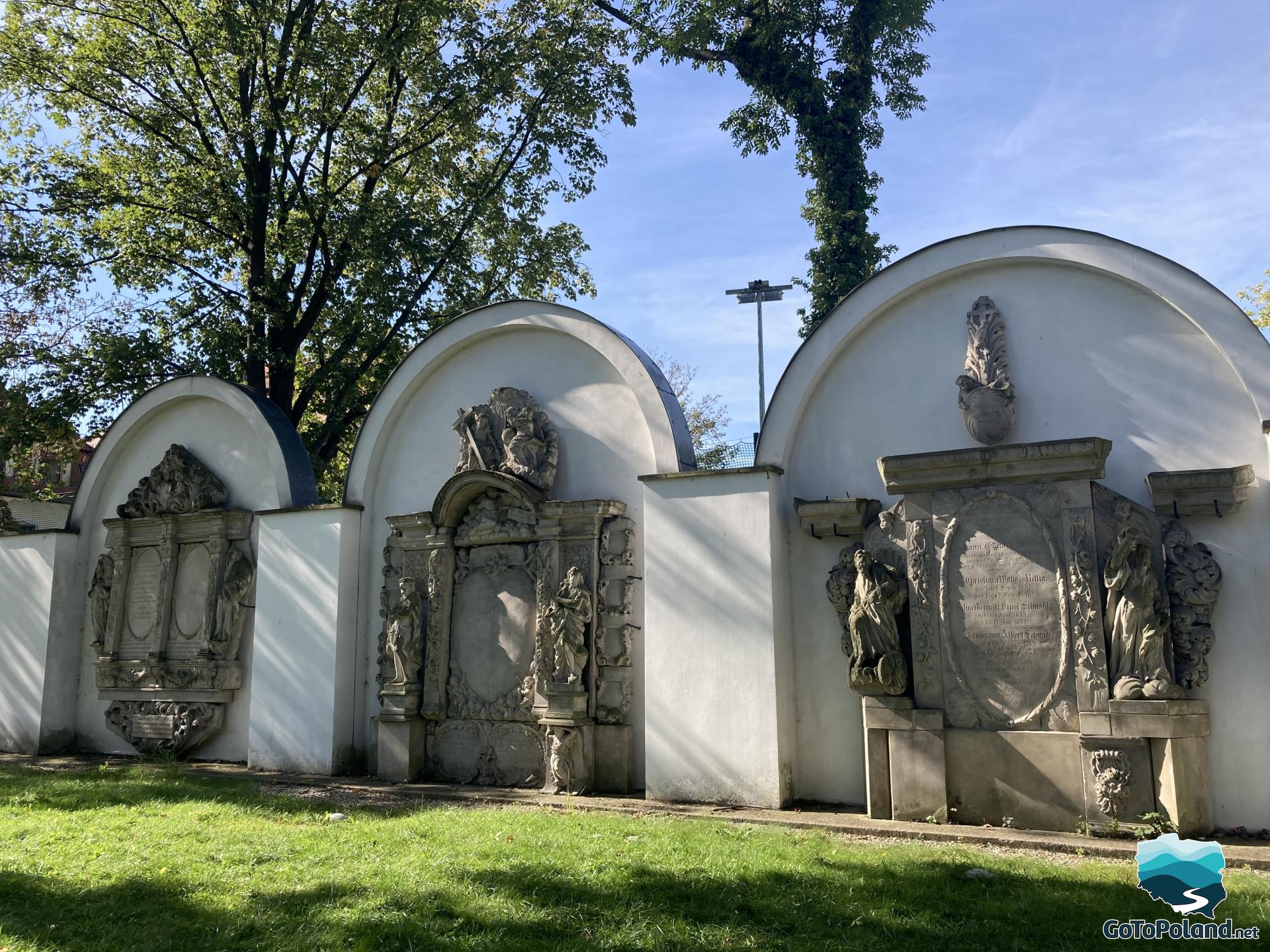
From the church I finally walked to the Jelenia Góra Market Square.
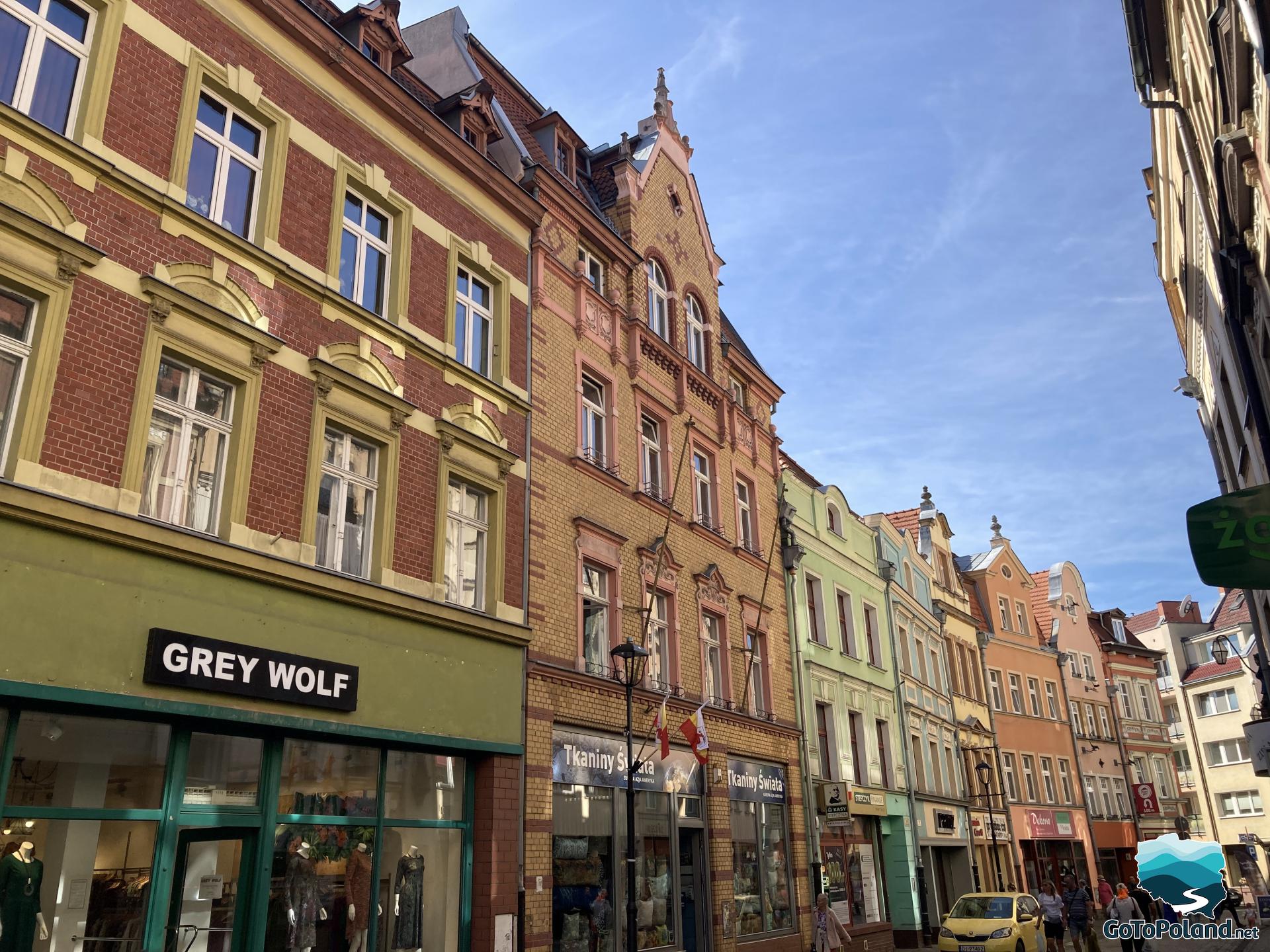
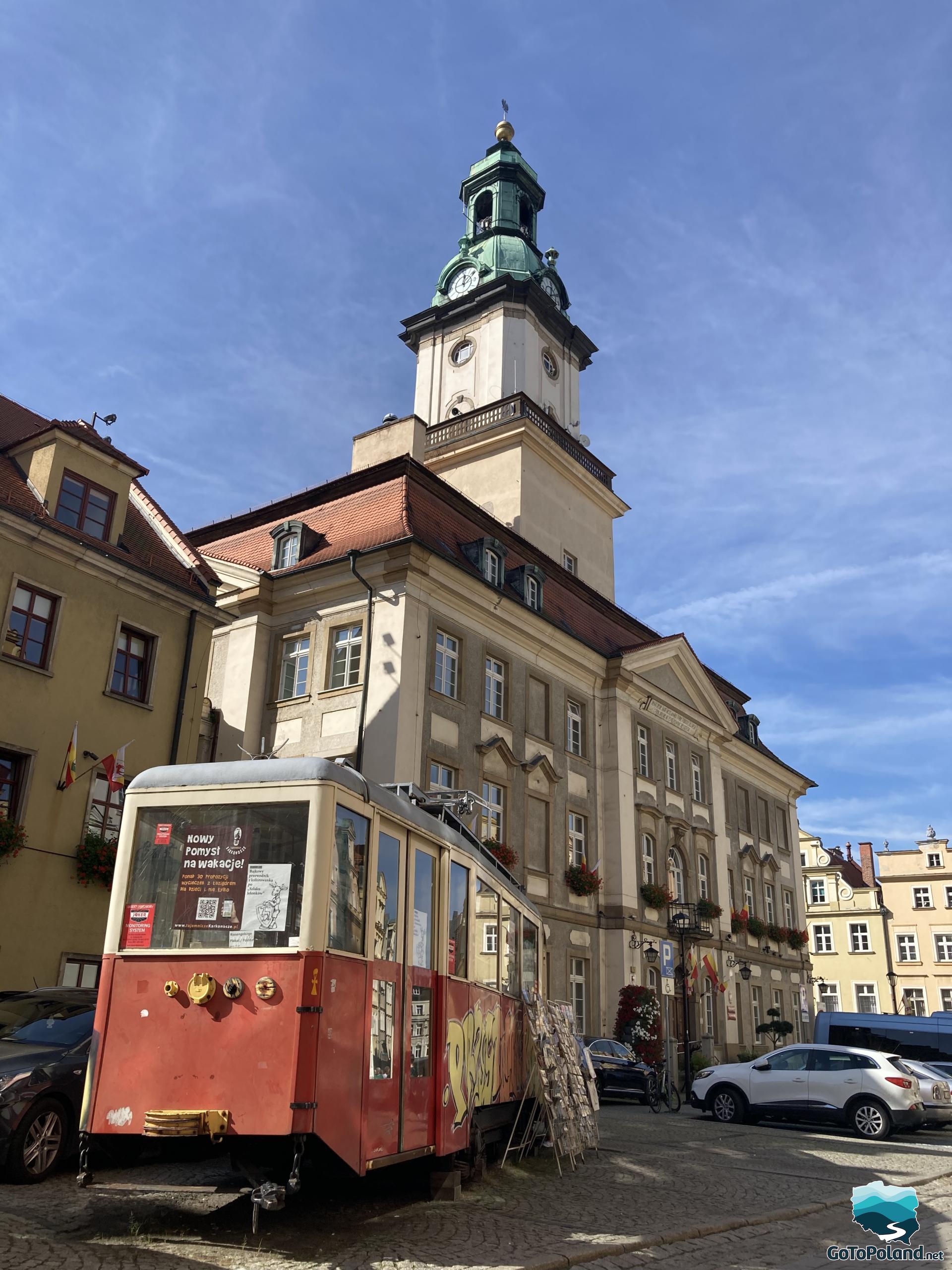
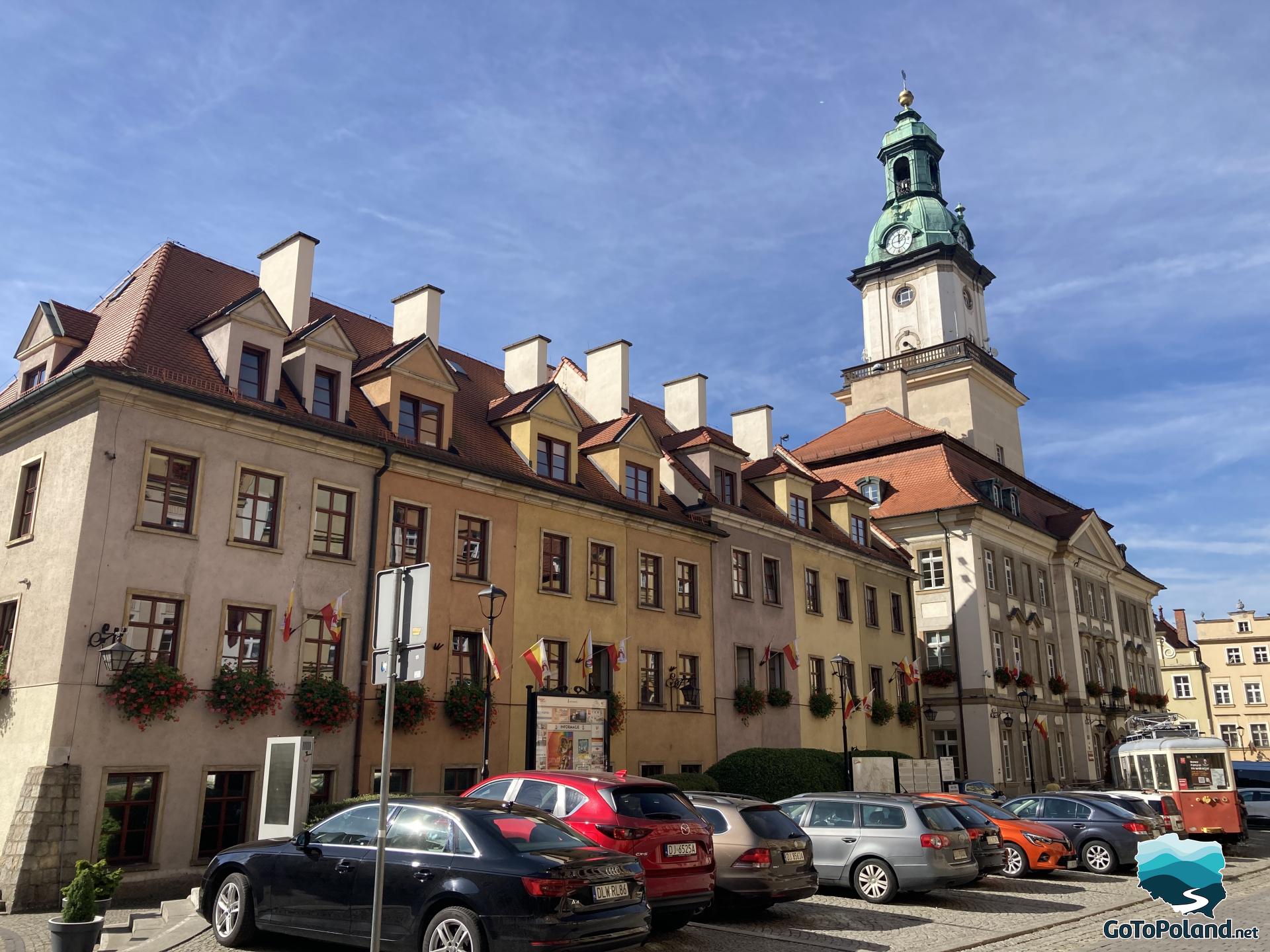
The town hall connector, which connects the Town Hall building with the Seven Houses, is decorated with a coat of arms with a deer.

Jelenia Góra is a city with the oldest street theater festival in Poland, taking place in the summer since 1983. In 2013, the theater festival received its monument on the Jelenia Góra Market Square near the Town Hall. The street theater festival monument is popularly called the Jelenia Góra stilt walker. It was created by the Armenian artist Vahan Bego. I love this monument!

Of course, there is also a fountain on the Main Square :)

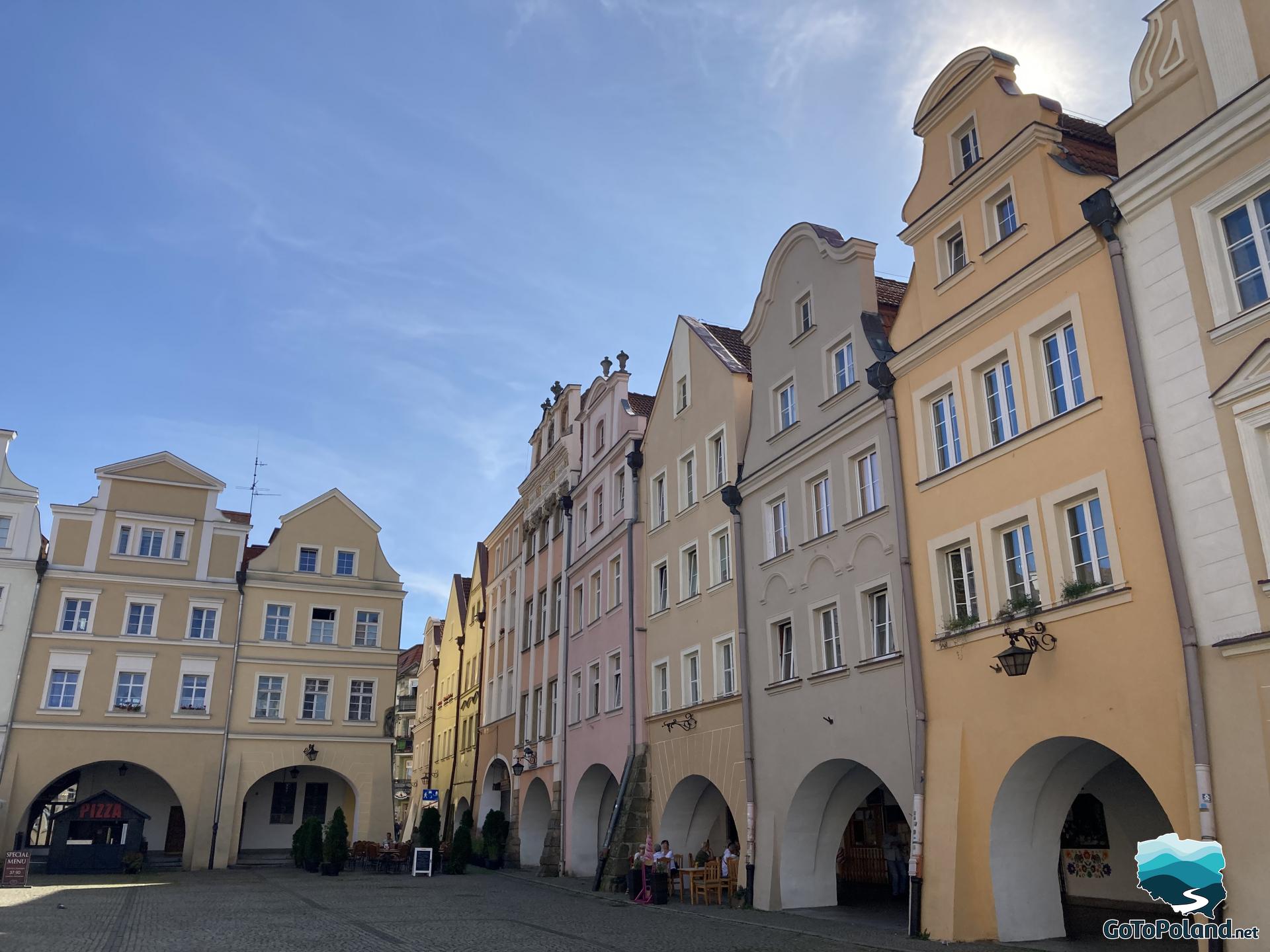
A monument commemorating the 900th anniversary of Jelenia Góra stands near the wall of the so-called Seven Houses. Under the obelisk there is a metal plate with a list of Jelenia Góra's partner cities.
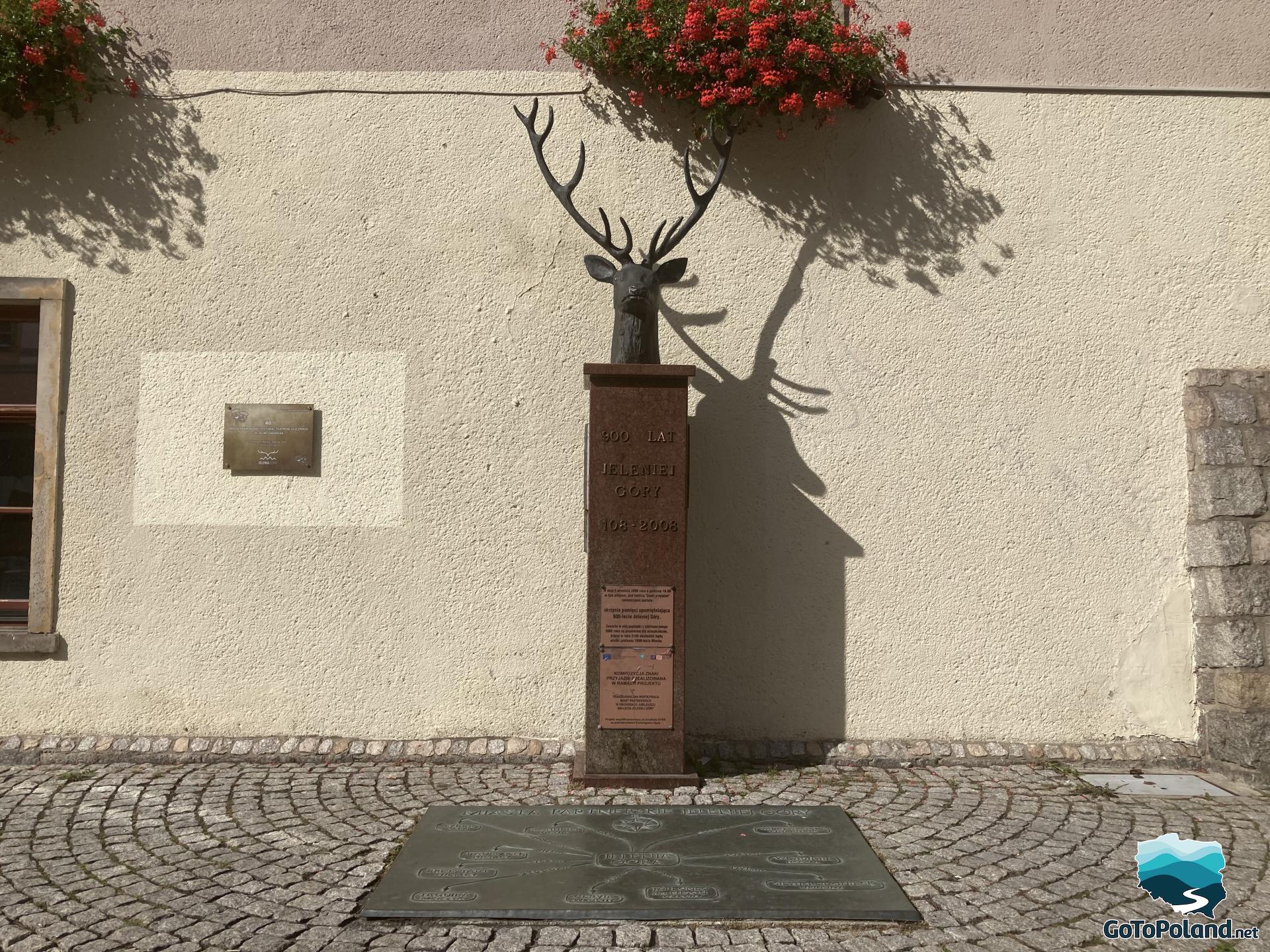
Walking around the city, I came across some small and cute deer. The Jelenia Góra Jelonki Trail is the city's showcase.
The legend of the founding of Jelenia Góra dates back to the times of Bolesław Krzywousty, who went to the forests on the Bóbr River to hunt. Together with his companions, he traveled through the forests until he encountered large and beautiful deer. The largest deer with beautiful antlers escaped into the forest, and Bolesław gave chase. He was unsuccessful in his pursuit, so the hunters went to sleep on one of the hills. Soon there also appeared a deer, which Bolesław managed to hunt. However, he felt grief when he saw the animal's tears, and as a memento, he ordered to built a town in this place and called it Jelenia Góra.
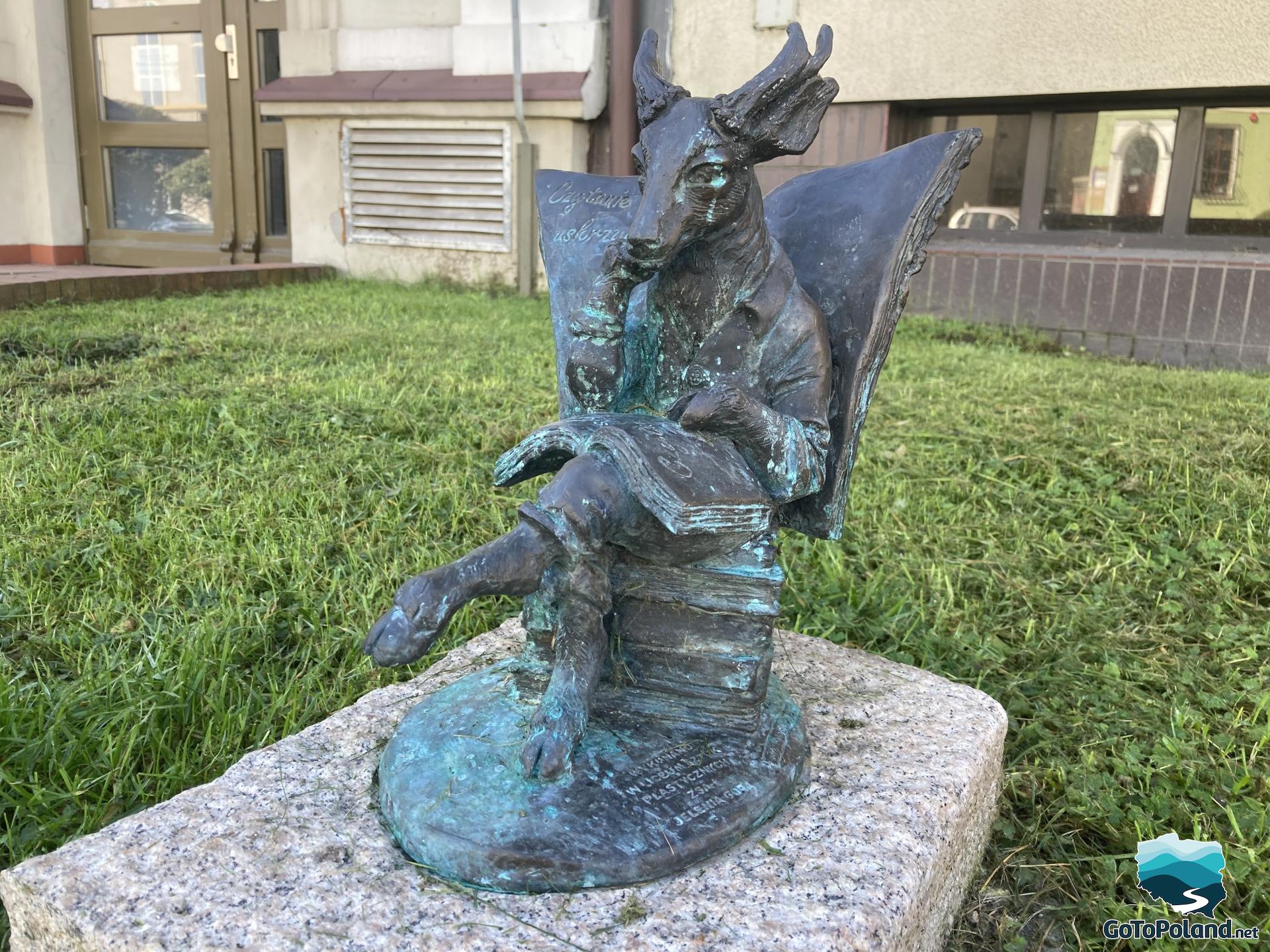 | 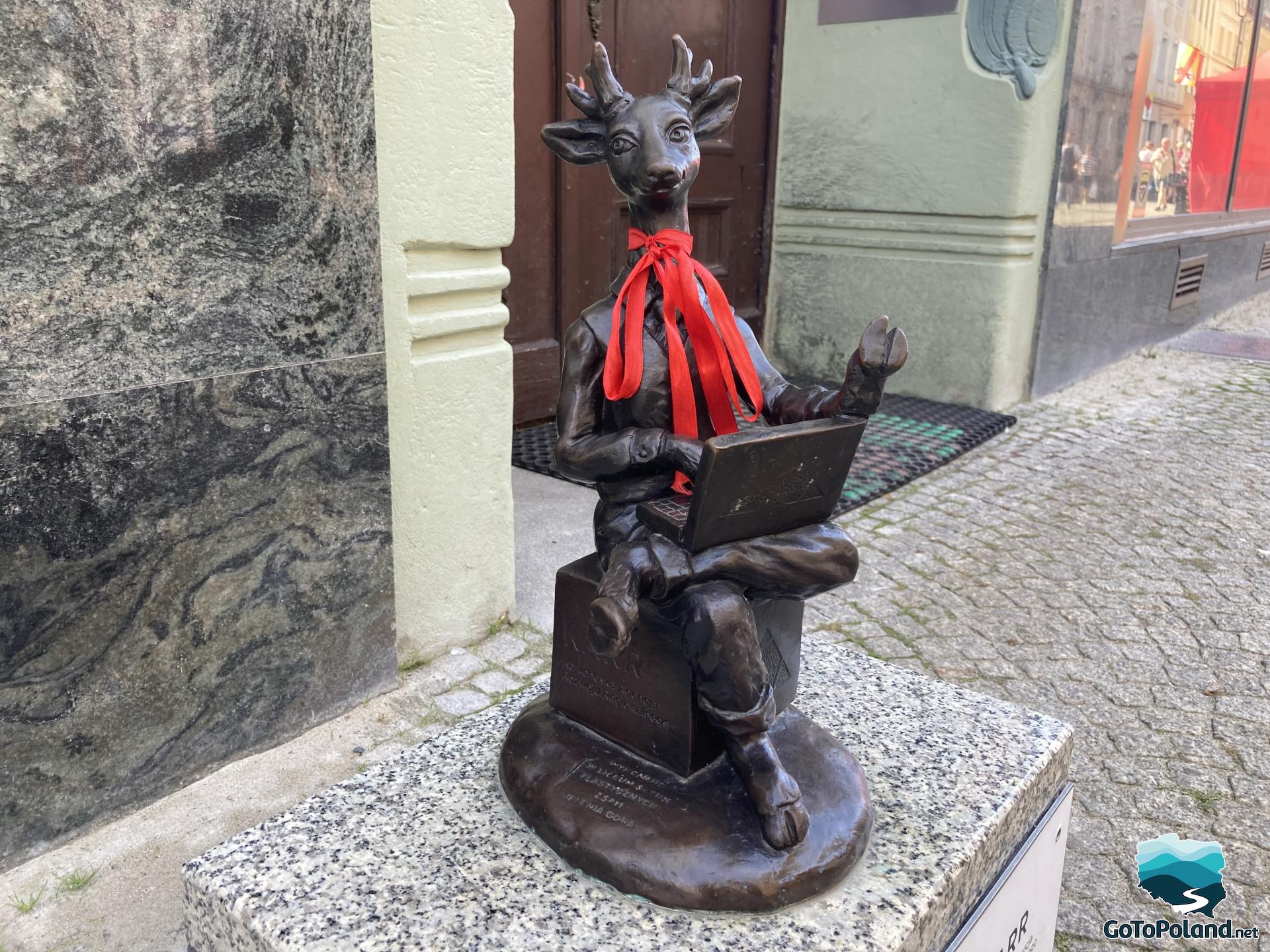 |
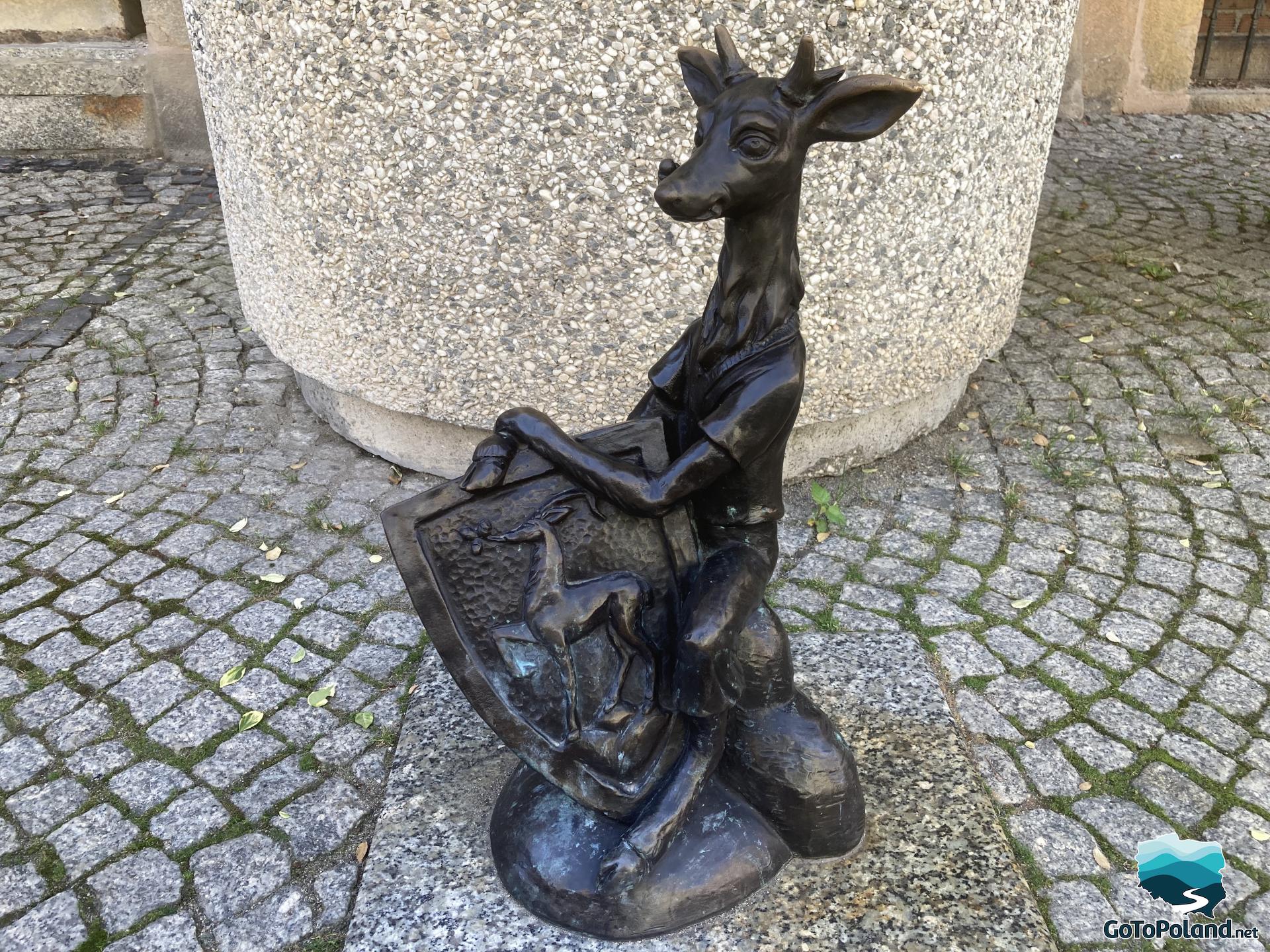 |  |
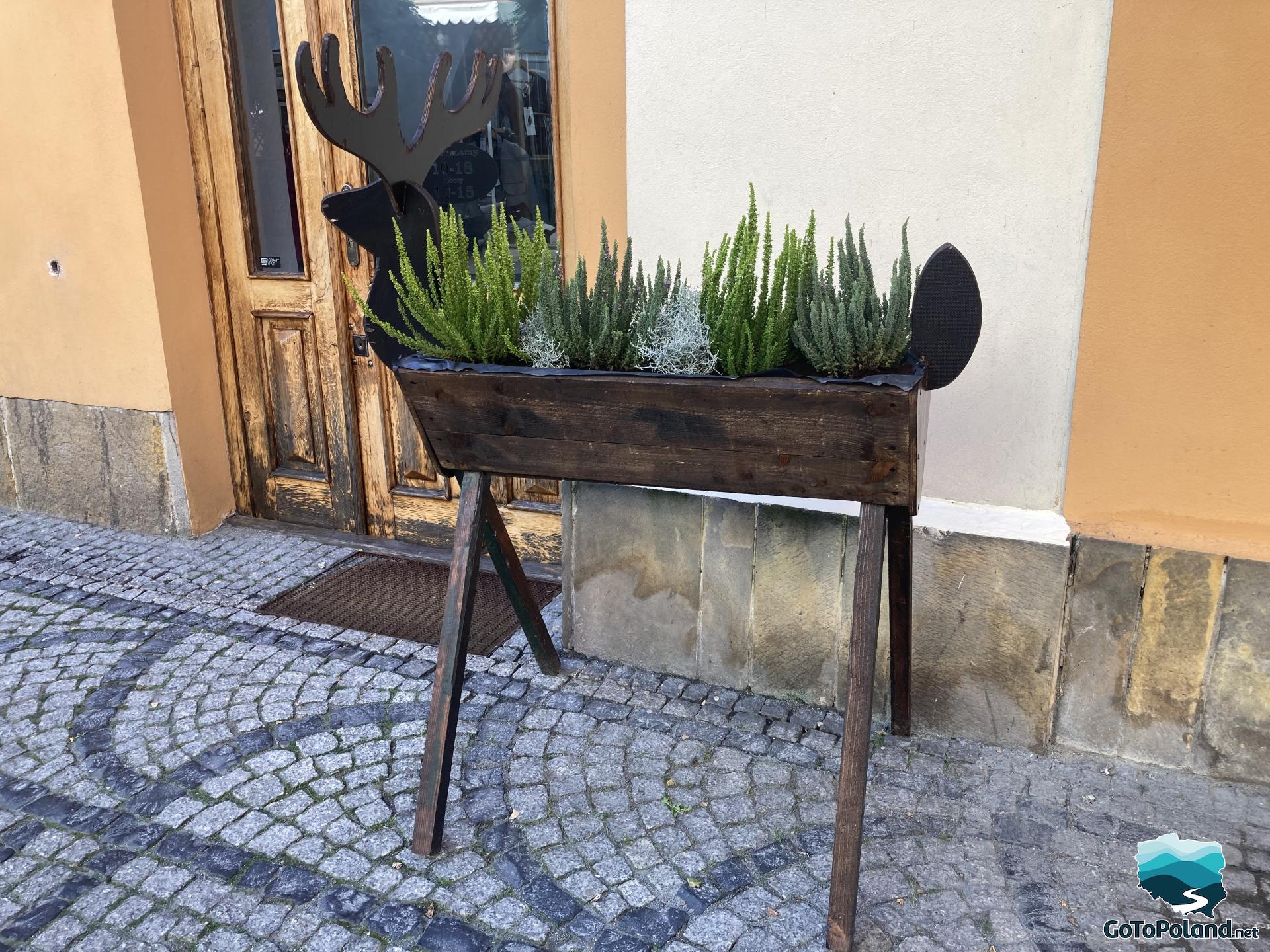
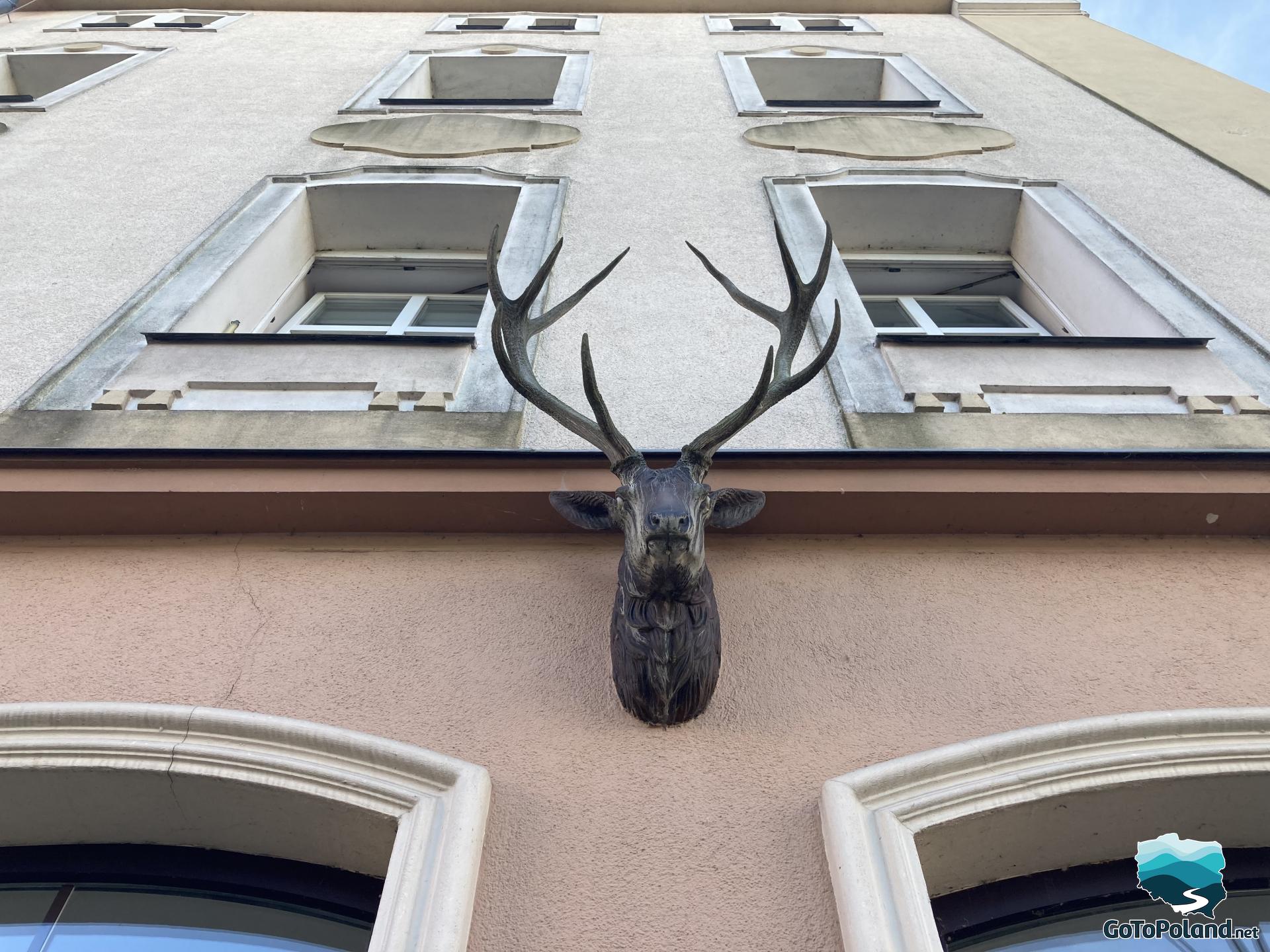
This building with a sundial from 1736 belonged to the Nauke family. This family had been engaged in butchering for several generations, and their company store was located on the ground floor of the tenement house.

Orthodox Church of the Holy Apostles Peter and Paul. In the years 2000-2003, the temple was thoroughly restored.
The church equipment was brought from destroyed churches in the Lublin region.
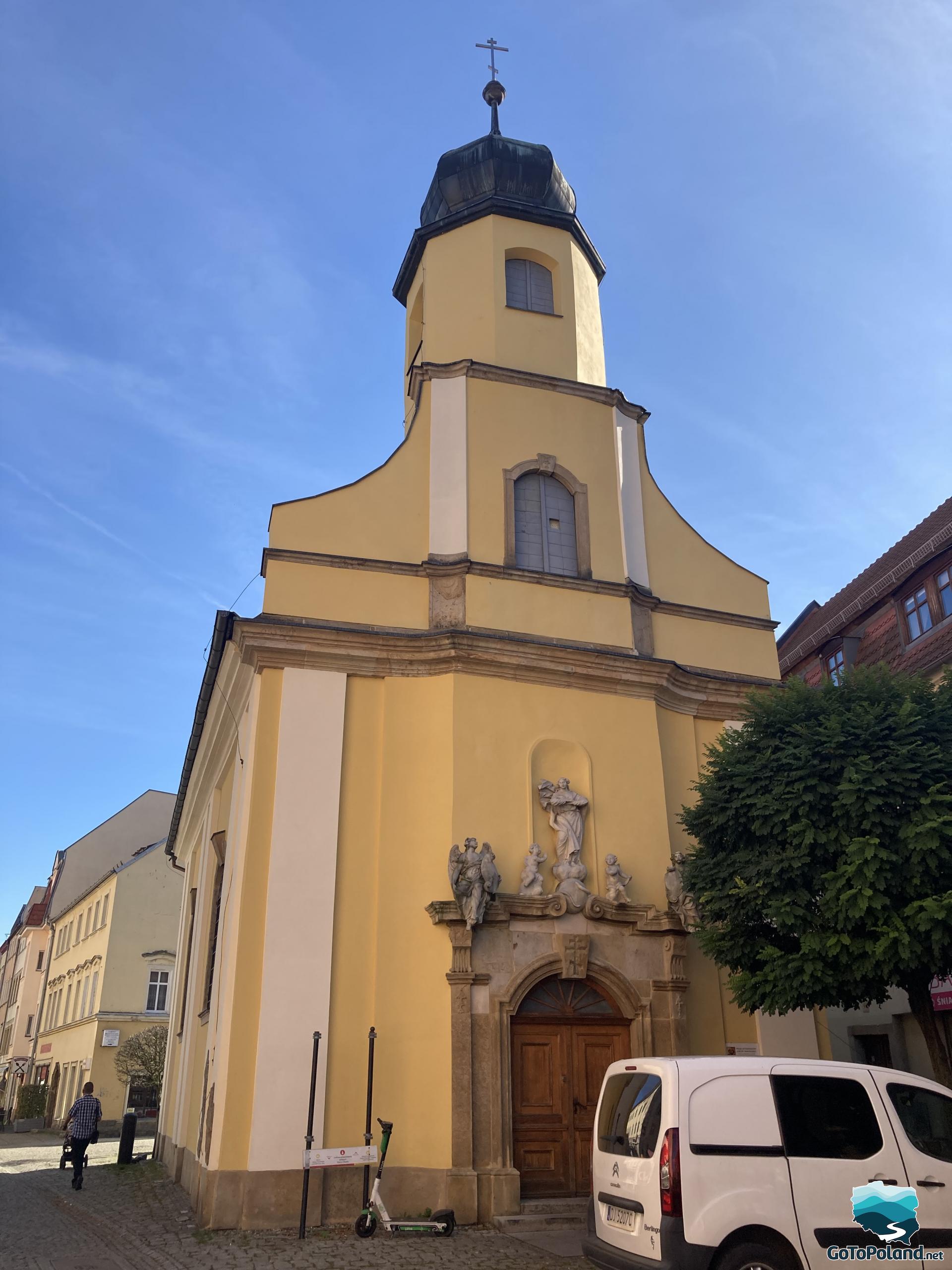
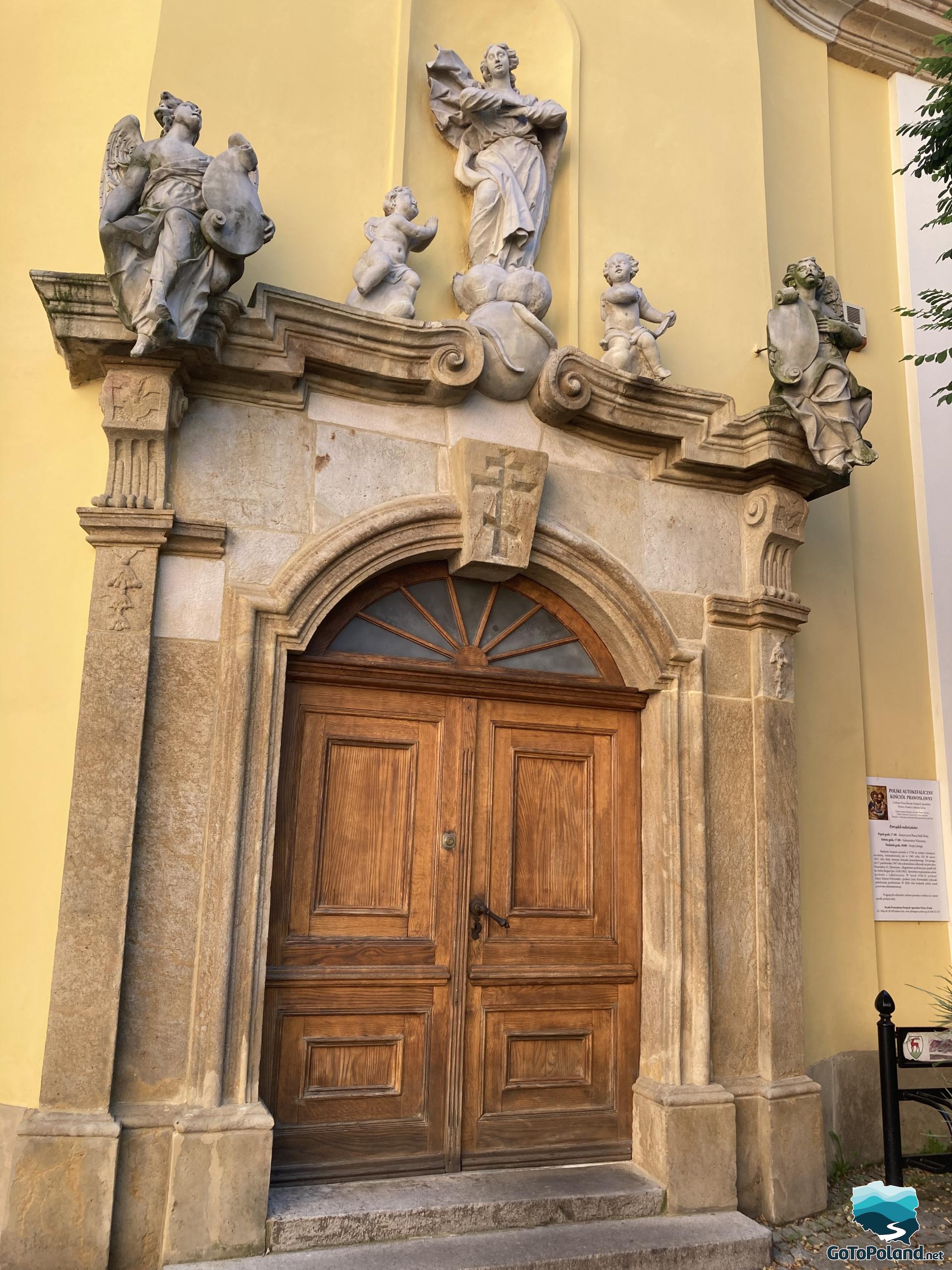
St. Basilica Erasmus and Saint Pankracy in Jelenia Góra. The basilica is Gothic, three-nave, four-bay, first mentioned in 1303 after its fire, rebuilt in the 14th century, and rebuilt in the 15th and 16th centuries. Inside, there is a large set of baroque wooden, polychrome figures and oil paintings from the 18th century. The outer walls preserve an impressive set of epitaphs and tombstones from the 16th and 18th centuries.
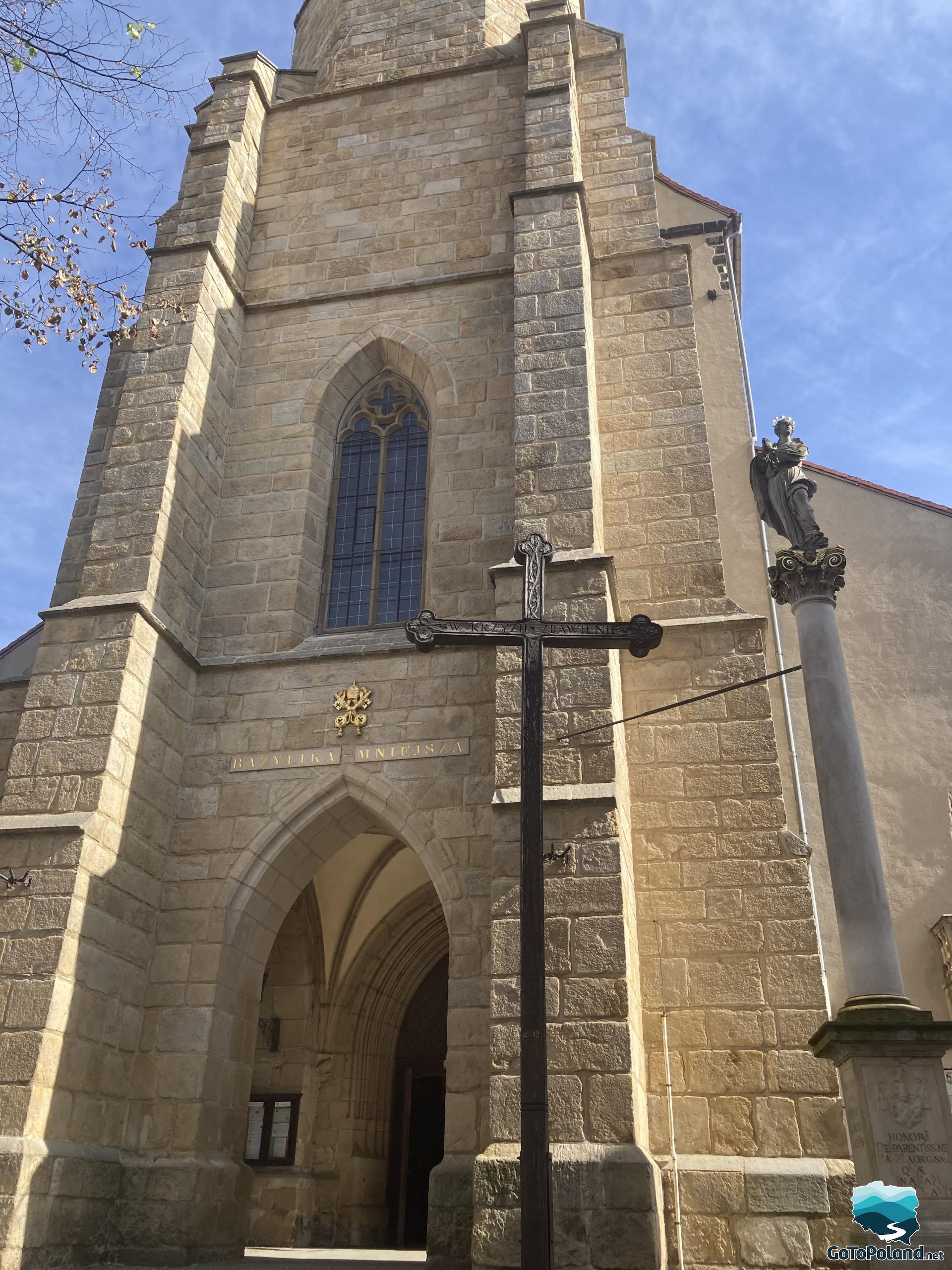 | 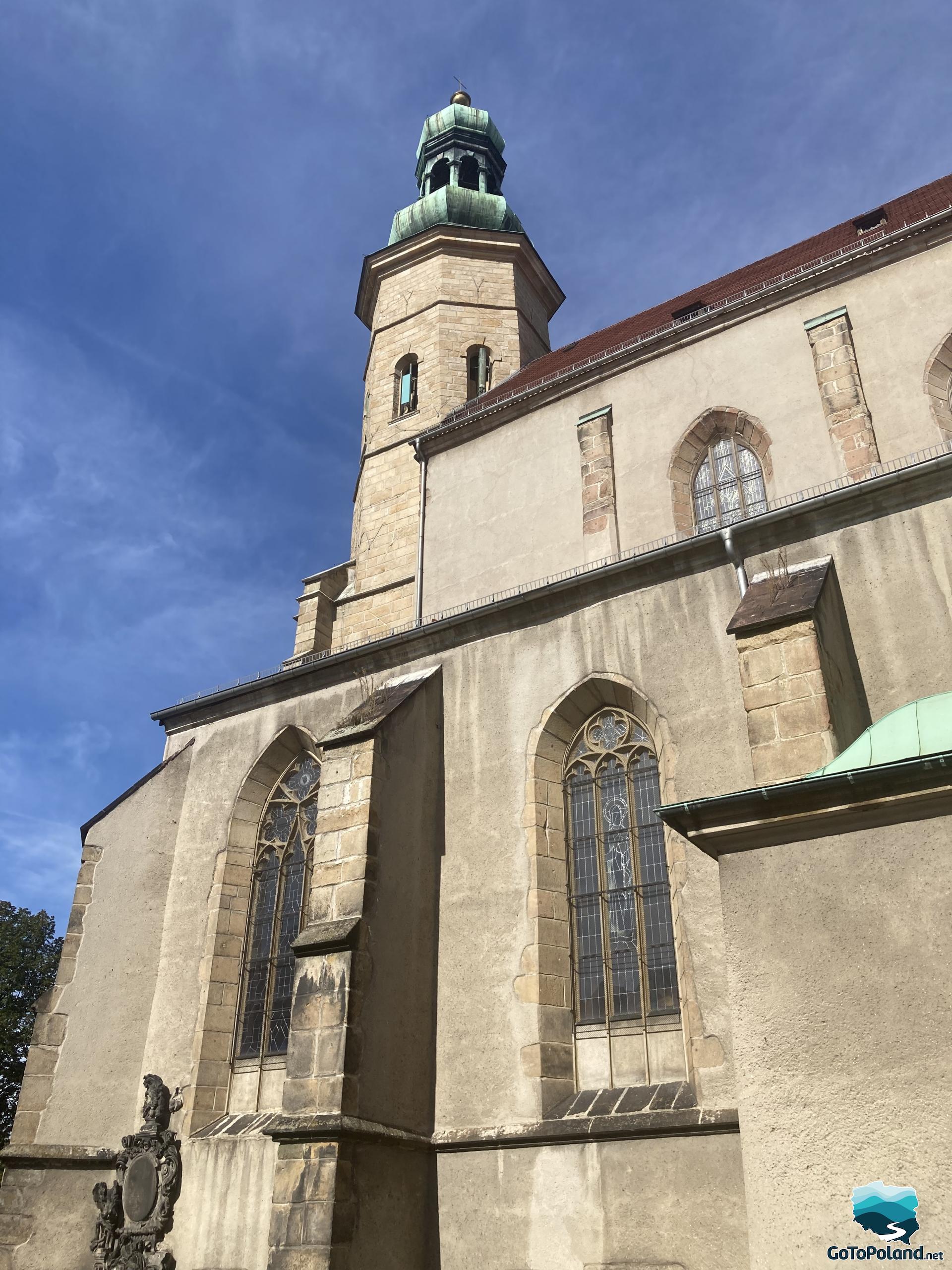 |
Unfortunately, during our visit, the basilica was under renovation and we were unable to enter it.
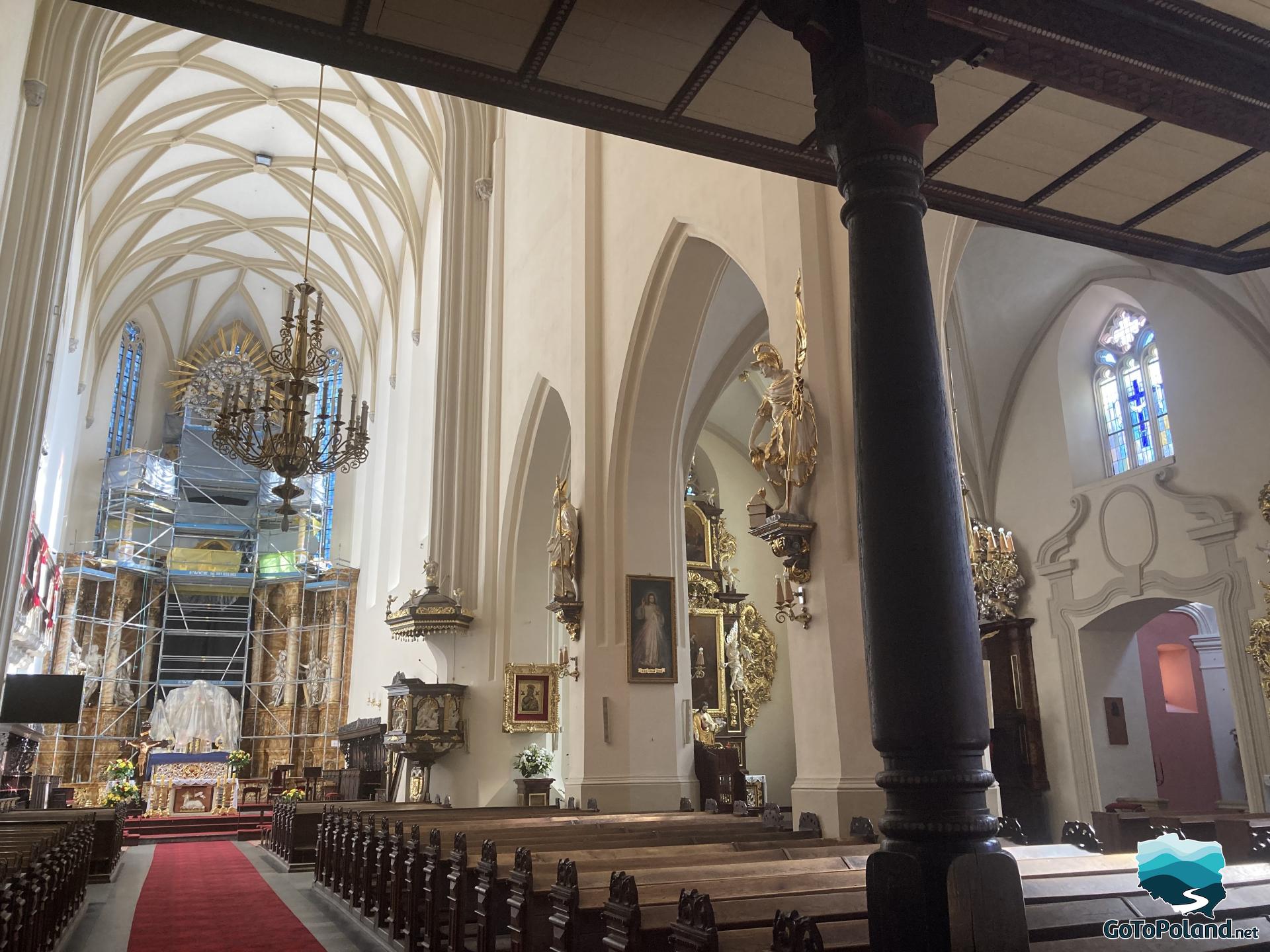
Epitaph on the wall of the basilica.
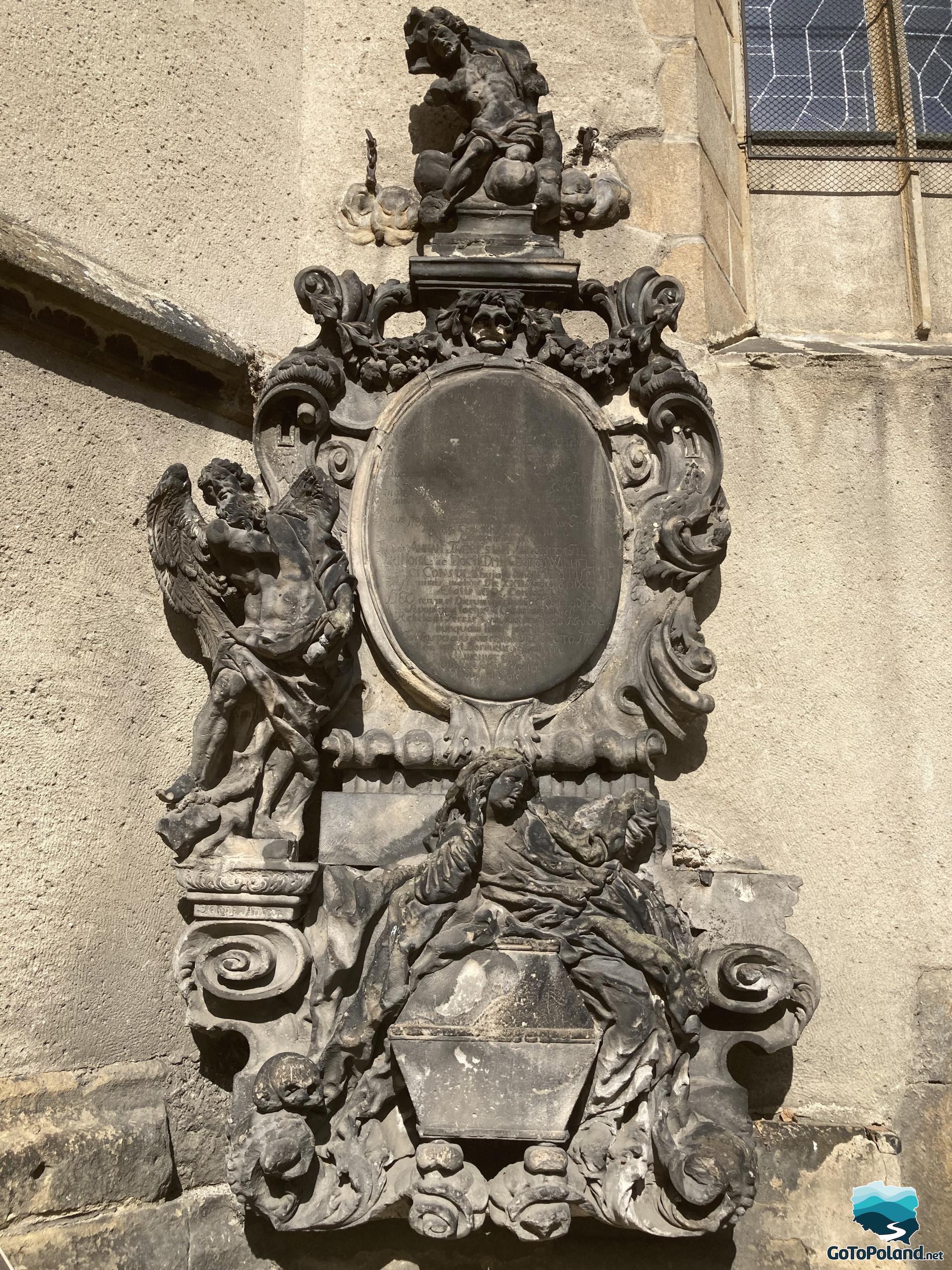
The Castle Tower is the only preserved element of the former Castle Gate, one of the entrance gates to Jelenia Góra surrounded by defensive walls. It is 27 m high and its walls are over 1 meter thick. Currently, the tower houses an observation deck from which there is a beautiful view of the city.
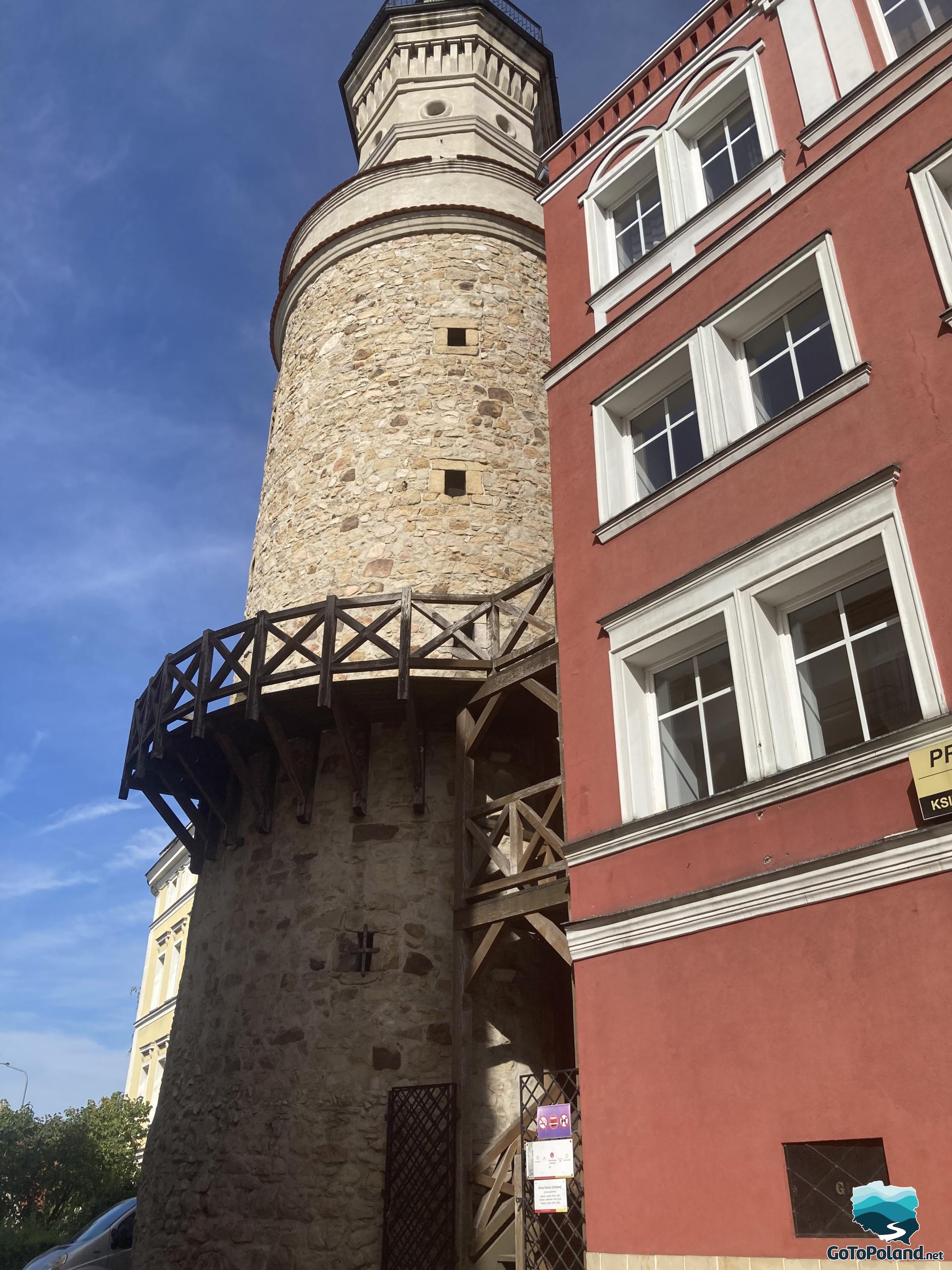
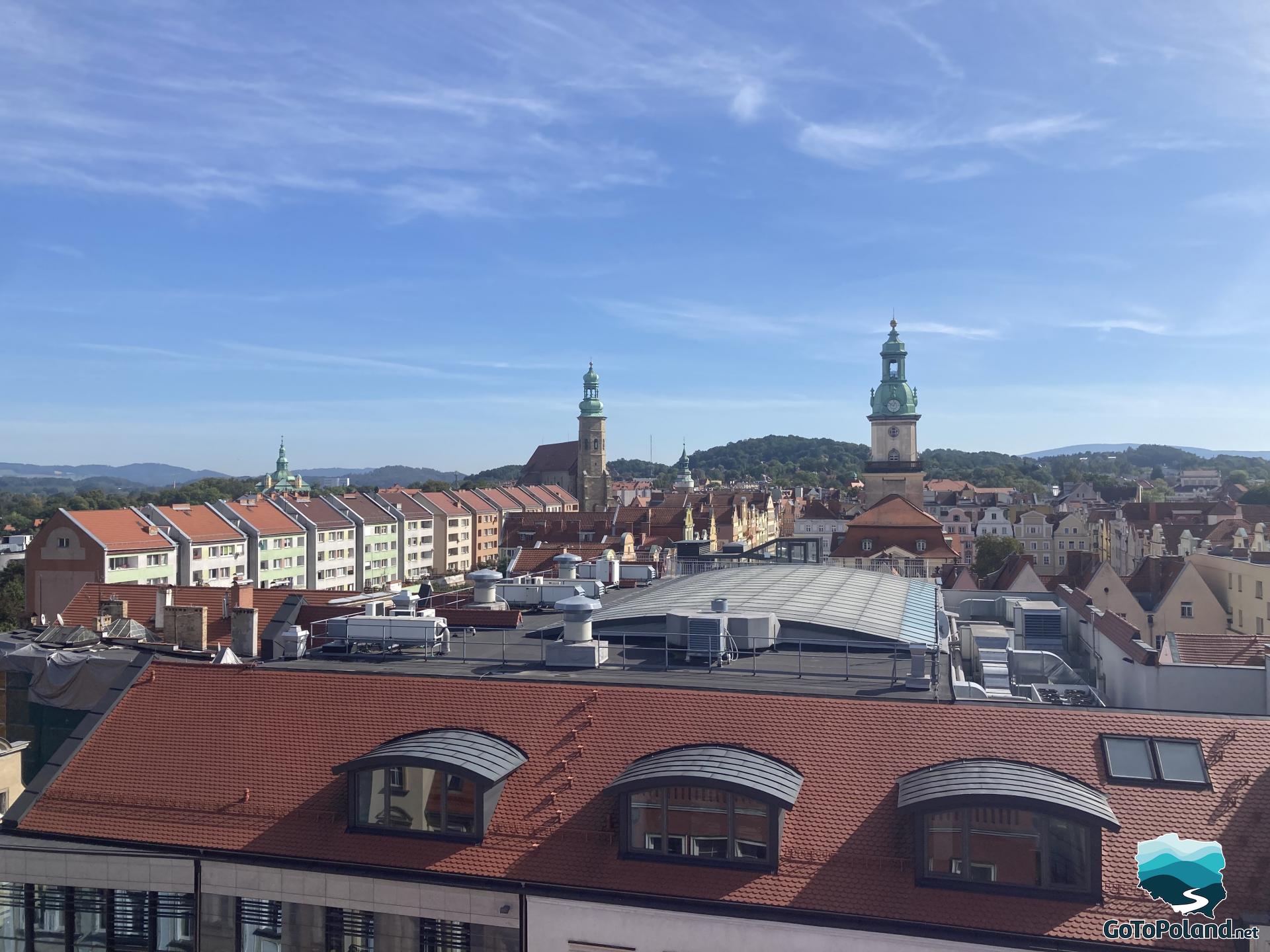
Everyone needs a little break.... even me :)

How to get to Jelenia Góra

